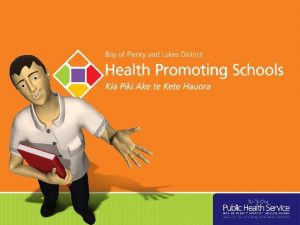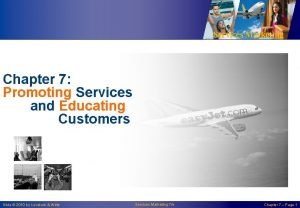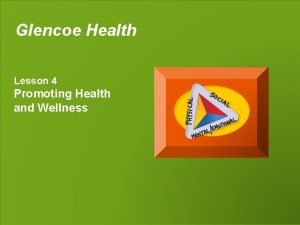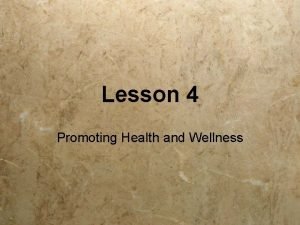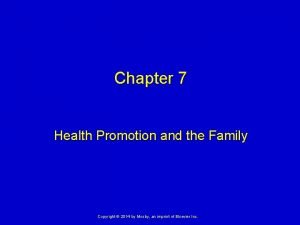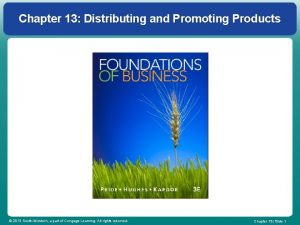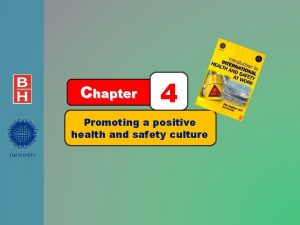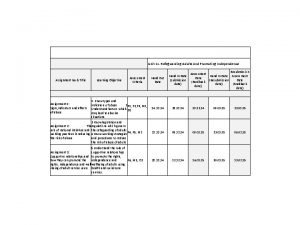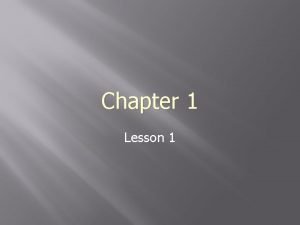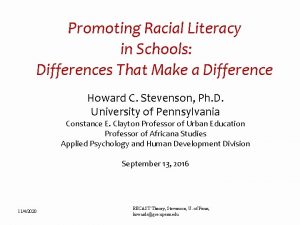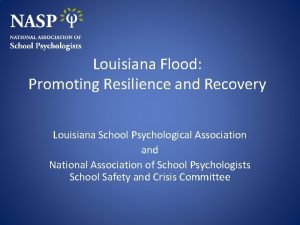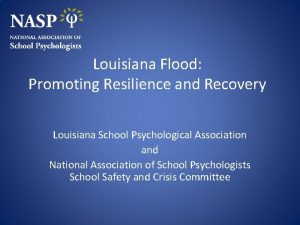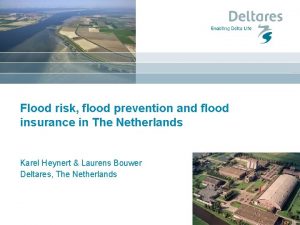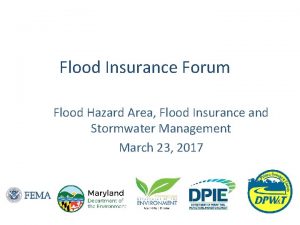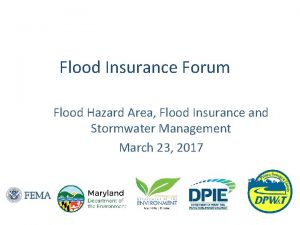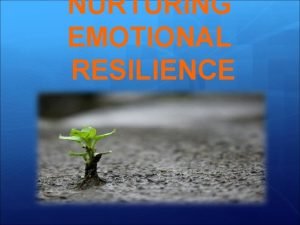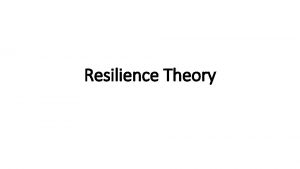Louisiana Flood Promoting Resilience and Recovery Louisiana School















- Slides: 15

Louisiana Flood: Promoting Resilience and Recovery Louisiana School Psychological Association and National Association of School Psychologists School Safety and Crisis Committee

Crisis Defined • Brock and Di. Raddo (2012) outline • Crisis is “extremely negative, uncontrollable, or unpredictable” • Occurs suddenly, unexpectedly, and without warning • Generates feelings of helplessness, powerlessness, and entrapment "Is It A Crisis? ", 2012, Principal Leadership

Disaster Response Phases Myers and Zunin, 1990; DHHS, 2000 & 2004; Herrmann, 2004

PREPa. RE Model Emphasis • • • Physical proximity to incident Emotional proximity Internal vulnerabilities External vulnerabilities Threat perceptions Importance of healthy support systems PREPa. RE Workshop 2 ( 2011)

Determining How to Intervene All school crisis teams in affected areas need – Critical information about impact on homes, schools, roads, etc. – Are schools accessible, and functioning? – Knowledge about available resources for community • Non-profit and government agencies • What and when assistance is available • Application processes, if any

Returning to Routines Requires Planning ü Challenges for all facets of school infrastructure, from transportation to teaching ü Challenges for employees in getting to work ü If impacted personally, importance of time to make calls and get assistance ü Locating students who have not returned ü Balancing academic demands with highly impactful event

Crisis Incidents Affect People Differently: Assessment Needed üHow do people (adults and children) typically cope? üHow supportive is the community? üInterventions may be needed universally to ensure that all have access to critical information üSchool teams need community partners to ensure that larger issues (e. g. community safety) are addressed

Levels of School Crisis interventions Tier 3 Indicated Psychotherapy Tier 2 Selected Psycho-educational Groups Immediate Crisis Intervention Tier 1 Universal Prevent Psychological Trauma Reaffirm Physical Health Ensure Perceptions of Security & Safety Evaluate Psychological Trauma Re-establish Social Support Systems Caregiver Trainings Identifying indicated interventions is a primary focus once routines are reestablished. 8

Practical Methods of Outreach • Sharing Handouts from NASP and LSPA • Information Sessions for Staff, Parents, Administrators, Mental Health Professionals, Volunteers • Peer Support • Engaging community members in offering support • NASP Community for Louisiana • School Safety and Mental Health Pages and Social Media

Legal & Procedural Supports for Students • Mc. Kinney-Vento Act – Immediate enrollment – No delay for records – Free lunch • LA Department of Education – Hot Topics • Disaster Recovery Guidance-temporary waivers for certain requirements to aid in enrolling students

Helping Teachers Know What to Say • Maintain typical routine • Create an environment for kids to share (e. g. , Class Meeting, individual talks for those who prefer privacy) • In a group of children with mixed experiences, if traumatic experiences are shared, contain the level of detail and refer to a more private time to talk and utilize referral system for more help • Adjust deadlines and expectations of workload • If you see a change in behavior, make sure a follow-up from a helping professional happens EVERY TIME • Model and teach appropriate adaptive coping for kids (e. g. , destress techniques, positive self-talk, seeking help when you need to talk) • Answer student questions honestly and at a developmentally appropriate level

Referrals for Trauma Needs What do you have available in your Community? – State resources • Gov. louisian. gov – Community mental health providers – School-based counseling services – Future trauma training – PREPa. RE Trainers in LA for consultation and guidance

Importance of Self-Care • School mental health providers, educators, parents, and others can easily become overwhelmed by a crisis incident • Advocate for self-care mechanisms • Model appropriate coping by: – Taking needed breaks – Reaching out to others for support – Taking care of physical and mental well being – Taking steps toward personal recovery

Resiliency Each person has coping skills to leverage their adjustment Together, we will get through this. The human capacity for burden is like bamboo…. far more flexible than you would ever believe at first glance. –Jodi Piccoult

NASP Handouts on Natural Disasters Visit: www. nasponline. org • Helping Children After a Natural Disaster: Information for Families and Educators – https: //www. nasponline. org/resources-and-publications/resources/school-safety-andcrisis/natural-disaster • Natural Disasters: Brief Facts and Tips – https: //www. nasponline. org/resources-and-publications/resources/school-safety-andcrisis/natural-disasters-brief-facts-and-tips • New Schools for Students With Disabilities: Tips for Relocated Families – https: //www. nasponline. org/resources-and-publications/resources/school-safety-andcrisis/natural-disaster/new-schools-for-students-with-disabilities-tips-for-relocatedfamilies • Natural Disasters and Relocated Students With Special Needs: Recommendations for Receiving Schools – https: //www. nasponline. org/resources-andpublications/resources/school-safety-and-crisis/naturaldisaster/natural-disasters-and-relocated-students-with-special-needs
 Health promoting school
Health promoting school Promoting services and educating customers
Promoting services and educating customers Glencoe health and wellness
Glencoe health and wellness Chapter 1 understanding health and wellness lesson 4
Chapter 1 understanding health and wellness lesson 4 Lesson 4 promoting health and wellness
Lesson 4 promoting health and wellness Chapter 7 promoting health and wellness
Chapter 7 promoting health and wellness Chapter 13 distributing and promoting products
Chapter 13 distributing and promoting products Promoting services and educating customers
Promoting services and educating customers Promoting a positive health and safety culture
Promoting a positive health and safety culture Unit 11 safeguarding adults and promoting independence
Unit 11 safeguarding adults and promoting independence Chapter 1 lesson 4 promoting health and wellness
Chapter 1 lesson 4 promoting health and wellness Promoting moral improvement
Promoting moral improvement Promoting alternative thinking strategies
Promoting alternative thinking strategies Promoting family earthquake preparedness
Promoting family earthquake preparedness Promoting racial literacy in schools
Promoting racial literacy in schools Philip curry business
Philip curry business
